 Sushi Shrimp Overview
Sushi Shrimp Overview
Shrimp used in sushi is typically evaluated based on six criteria: color, sweetness, umami, aroma, texture, and cost. This evaluation excludes sweet shrimp and botan shrimp, which are eaten raw.
Among shrimp that are cooked—usually by boiling—and served in sushi restaurants, including conveyor belt sushi, the most commonly used are banamei shrimp (farmed), black tiger shrimp (farmed), and kuruma shrimp (wild or farmed).
In Japan, annual shrimp consumption is estimated at around 250,000 tons. Of this, banana shrimp and black tiger shrimp make up approximately 80%, while kuruma shrimp accounts for less than one-tenth of banamei shrimp’s volume.
Banamei Shrimp (Litopenaeus vannamei)
Banamei shrimp is the world’s most widely farmed white shrimp and is commonly used in Japan, especially in conveyor belt sushi and supermarkets.
When cooked, its color shifts from pale pink to a soft orange, creating a clean, uniform appearance ideal for commercial use. Its sweetness is mild and understated, offering a balanced flavor that blends well with vinegared rice.
The umami is gentle and neutral, without any strong distinctive notes, making it a good companion to other ingredients. However, its aroma is weak, especially when cooked without the shell, which is why it’s rarely used in high-end sushi establishments where fragrance is prized.
The texture is soft and slightly moist, particularly after freezing and thawing, making it easy to eat for all ages.
Where banamei shrimp excels is in cost-effectiveness. Its high yield, low price, and ease of processing make it a go-to option for volume-based food service. Though not remarkable in any single aspect, its consistency and affordability make it indispensable for everyday sushi.
Black Tiger Shrimp (Penaeus monodon)
Black tiger shrimp, named for its dark striped shell, is a large species that once dominated global shrimp farming. It remains popular in Japan as a sushi and tempura ingredient, even as banamei shrimp has become more prevalent.
When cooked, it shows a vivid red-orange border contrasting with its white flesh—a striking visual that enhances the presentation of nigiri sushi. This eye-catching appearance makes it popular in local and mid-range sushi restaurants.
It has a slightly richer sweetness than banamei shrimp, paired with moderate umami and a clean, balanced flavor. While its raw aroma is faint, cooking brings out a subtle shrimp-like fragrance that complements the delicate scents of sushi.
Its texture is firm and springy, retaining its structure even after freezing, which makes it suitable for processing. This satisfying chew is one of the reasons it’s favored in sushi preparation.
Although farming costs have risen in recent years, black tiger shrimp still provides solid value as a mid-tier option. It’s more expensive than banamei shrimp but cheaper than kuruma shrimp, making it a practical choice for many sushi restaurants.
Overall, black tiger shrimp strikes a good balance between appearance, taste, and cost—neither luxurious nor cheap, but reliably satisfying.
Kuruma Shrimp (Marsupenaeus japonicus)
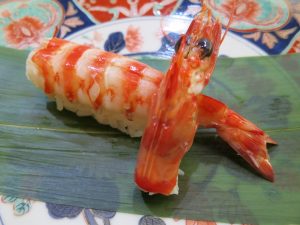
Kuruma shrimp is a premium species native to Japan and prized in both sushi and traditional kaiseki cuisine. Its excellence lies not only in its high status but in its culinary balance—color, sweetness, umami, aroma, and texture are all outstanding.
When cooked, it takes on a brilliant orange-red hue with a glossy finish that signals freshness and quality. In its raw state, it has a translucent reddish-brown shell that transforms into a visually stunning centerpiece after boiling—ideal for high-end sushi presentation.
Its sweetness is refined and natural, gradually unfolding with each bite and harmonizing beautifully with sushi rice. Unlike straightforward sugary sweetness, it carries a richness tied to the shrimp’s inherent umami.
That umami deepens when heated, resulting in a pure, well-defined flavor with a clean aftertaste. Expert sushi chefs often grill or steam kuruma shrimp lightly to draw out its full potential.
Its aroma is delicate and marine-like, intensifying when cooked and adding elegance to the dish. The texture is supple yet resilient, with fine muscle fibers that feel smooth on the tongue. Unlike the springy bite of banamei or black tiger shrimp, kuruma shrimp has a calm, refined elasticity—a “quiet luxury” that signals quality from the first bite.
Due to limited domestic production and a focus on wild-caught varieties, it comes at a premium price. Even farmed kuruma shrimp remains significantly more expensive than banamei or black tiger shrimp. As a result, it’s rarely used in conveyor belt sushi and is mostly reserved for upscale restaurants.
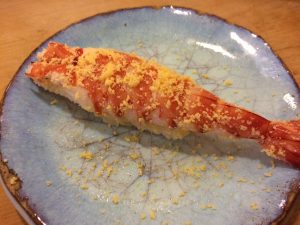
In traditional Edomae sushi, kuruma shrimp may be aged in kimizu oboro (sweetened egg vinegar oboro) for several days to enhance its umami and introduce a gentle acidity. Its preparation also requires care—shrimp naturally curl during boiling, so chefs make precise incisions or use skewers to keep them straight, a technique that showcases culinary skill.
In short, kuruma shrimp combines taste, aroma, beauty, and elegance into a single, premium ingredient. Though costly, it brings depth and refinement that elevates sushi to an art form—a true “star” of the sushi counter.
Related contents:
We hope this information will be helpful.

Revision date: June 14, 2025
Share this article
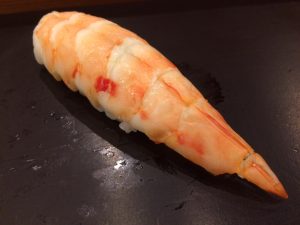 Sushi Shrimp Overview
Sushi Shrimp Overview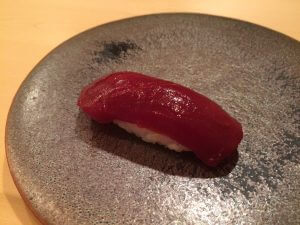 Zuke is one of the traditional Edo-style sushi methods. It is said that it was started in the Edo period to stop tuna from rotting when there were large amounts of the fish in the market. Now that there has been advances in refrigeration technology, it’s no longer necessary, but maturing the fish gives it a completely different taste and brings out its umami. Zuke is divided into two broad methods. Here we describe the characteristics of each.
Zuke is one of the traditional Edo-style sushi methods. It is said that it was started in the Edo period to stop tuna from rotting when there were large amounts of the fish in the market. Now that there has been advances in refrigeration technology, it’s no longer necessary, but maturing the fish gives it a completely different taste and brings out its umami. Zuke is divided into two broad methods. Here we describe the characteristics of each.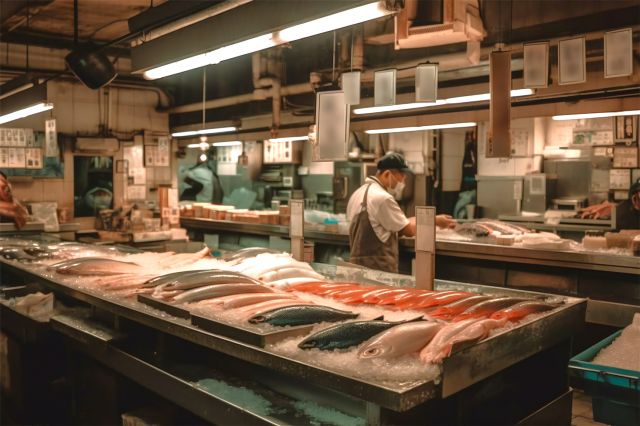
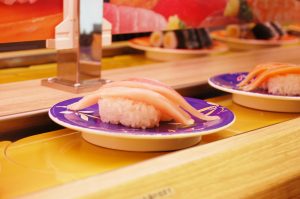 Conveyor belt sushi restaurants and high-end sushi restaurants in areas like Ginza both serve sushi, but they differ significantly in their roles and the quality of the experience they offer.
Conveyor belt sushi restaurants and high-end sushi restaurants in areas like Ginza both serve sushi, but they differ significantly in their roles and the quality of the experience they offer.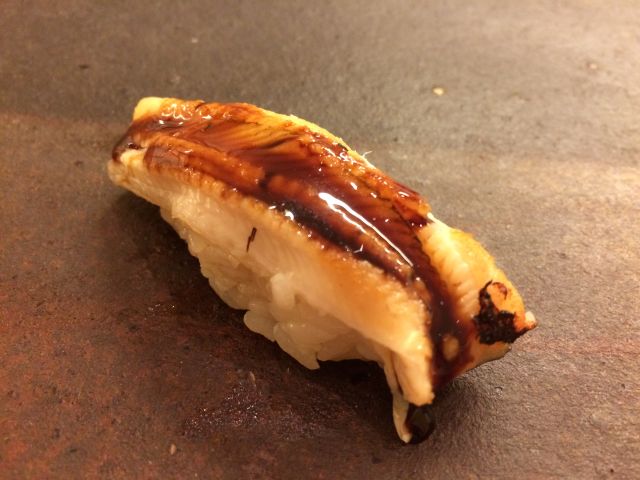
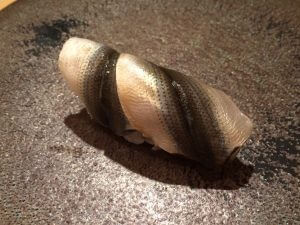 According to most sushi masters, salt is the defining factor in the taste of
According to most sushi masters, salt is the defining factor in the taste of  For example, a more slender fish in the middle of summer may be salted for 30 minutes, but a fatty fish in the winter needs to be salted for four hours. Just a few minutes longer or shorter than the perfect salting time completely changes the taste of the final dish.
For example, a more slender fish in the middle of summer may be salted for 30 minutes, but a fatty fish in the winter needs to be salted for four hours. Just a few minutes longer or shorter than the perfect salting time completely changes the taste of the final dish.